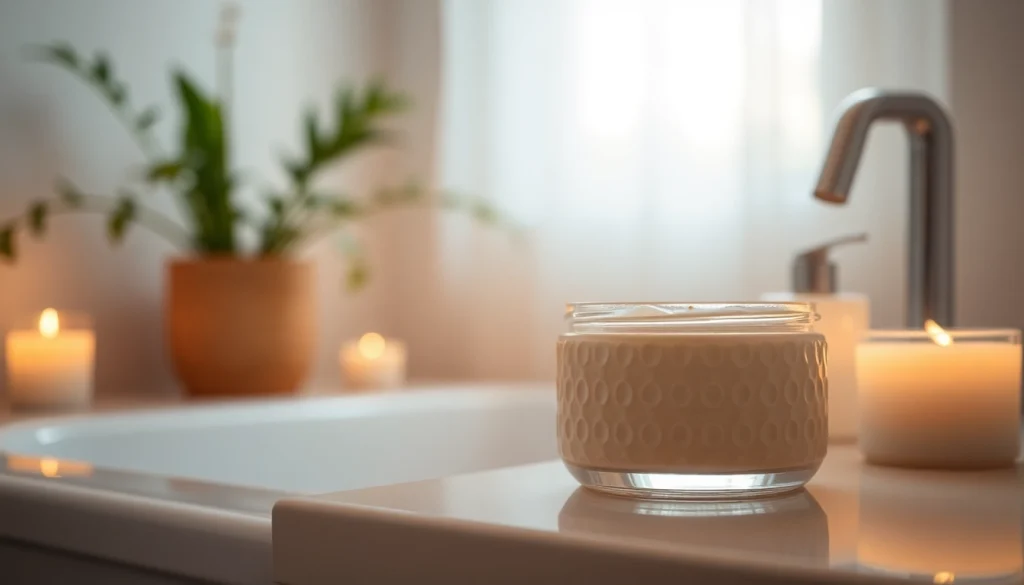Understanding Face Masks: A Skincare Essential
In the world of skincare, face masks stand out as a versatile and effective tool for nurturing and rejuvenating our skin. These treatments have gained immense popularity due to their targeted benefits, catering to a wide range of skin types and concerns. Whether your goal is hydration, exfoliation, or brightening, incorporating a face mask into your regimen can help achieve that desired glow. In this comprehensive guide, we’ll delve into the types, benefits, application techniques, and more, ensuring you have all the tools you need for effective skincare.
What is a Face Mask and Its Benefits?
A face mask is a thick, creamy substance designed to deep-cleanse, hydrate, nourish, or treat the skin’s surface and deeper layers. Uniquely formulated with various active ingredients, face masks boast numerous benefits, including:
- Deep Cleansing: Masks can extract impurities from the skin, helping to unclog pores and prevent breakouts.
- Hydration: Many masks are formulated specifically to provide intense moisture, improving skin hydration levels and suppleness.
- Nourishment: Packed with vitamins and minerals, face masks can replenish nutrients, making the skin look healthier.
- Exfoliation: Certain masks contain exfoliating properties that help remove dead skin cells, promoting a brighter complexion.
- Brightening: Many masks are infused with brightening agents to improve skin tone and reduce the appearance of dark spots.
Different Types of Face Masks
The variety of face masks available can cater to virtually every skincare need. Here are some of the most common types:
- Cream Masks: Rich and hydrating, ideal for dry skin.
- Clay Masks: Great for oily and acne-prone skin, helping to absorb excess oil and impurities.
- Sheet Masks: Pre-soaked in serum, perfect for a quick hydration boost.
- Gel Masks: Refreshing and hydrating, suitable for sensitive skin.
- Peeling Masks: Exfoliate and improve skin texture by removing dead skin cells.
Top Ingredients to Look For in Face Masks
When selecting the ideal face mask, the ingredients play a crucial role in determining its effectiveness. Understanding the key components can help you make informed choices.
Hydrating vs. Purifying Ingredients
Hydrating ingredients such as hyaluronic acid, glycerin, and aloe vera are essential for providing moisture and plumping the skin. In contrast, purifying ingredients like charcoal, clay, and salicylic acid target oiliness and acne by drawing impurities and excess oil out from pores.
Natural vs. Synthetic Components
Natural ingredients—like botanical extracts and essential oils—are often favored for their gentleness and nourishing properties. Synthetic components, on the other hand, can be more effective due to their targeted design, but may cause irritation for individuals with sensitive skin. Consider your skin’s needs and preferences when choosing between natural and synthetic masks.
Allergy Considerations When Selecting Face Masks
Before trying a new face mask, it’s crucial to read the ingredient list thoroughly to identify any potential allergens. Common irritants like fragrances, preservatives, and certain preservatives can provoke reactions in sensitive skin types. Conducting a patch test prior to application can help prevent adverse effects.
How to Properly Apply and Remove a Face Mask
The effectiveness of a face mask largely relies on the application process. A proper technique can enhance its benefits and ensure optimum results.
Step-by-Step Application Guide
- Cleanse: Begin with a clean face to allow for better absorption.
- Exfoliate: Exfoliating a day before applying the mask can gather better results by sloughing off dead skin cells.
- Apply Evenly: Using fingers or an applicator, spread the mask evenly over the face, avoiding the eye and lip areas.
- Relax: Take a few minutes to relax while the mask works its magic.
Timing: How Long Should You Leave it On?
Each face mask has a recommended duration for optimal results, usually ranging from 10 to 30 minutes. It’s essential to follow these guidelines to avoid irritation or diminished efficacy.
Best Practices for Removal and Aftercare
To remove a face mask, use lukewarm water to gently wash it off. Following removal, applying a soothing toner and moisturizer helps lock in benefits and hydrate the skin further.
Face Masks for Specific Skin Concerns
Different skin concerns require tailored solutions, and face masks can effectively address these issues.
Dealing with Acne and Oily Skin
Utilizing clay or charcoal masks can effectively absorb excess oil and minimize pores. Look for products containing salicylic acid for added acne-fighting benefits.
Soothe Sensitive and Dry Skin
Opt for hydrating and calming masks featuring ingredients such as aloe vera, chamomile, or honey. These help soothe redness and irritation while intensively moisturizing the skin.
Anti-Aging Masks for Mature Skin
Incorporating masks rich in antioxidants, peptides, and retinol can significantly benefit mature skin by promoting collagen production and improving elasticity, leading to a firmer complexion.
DIY Face Mask Recipes You Can Make at Home
For those who prefer homemade solutions, DIY face masks can be effective and fun to create. Here are some simple recipes and customization tips.
Simple Ingredients for Nourishing Masks
- Honey and Yogurt Mask: Mix equal parts for a hydrating mask that soothes dry skin.
- Aloe Vera and Cucumber Mask: Blend for a refreshing mask that cools and hydrates.
- Avocado and Oatmeal Mask: Combine mashed avocado with oatmeal for a nourishing, moisturizing treatment.
How to Customize Your Face Mask
Creating your own custom mask allows you to tailor ingredients according to your skin’s needs. Consider adding fruit extracts, essential oils, or powders like turmeric or green tea for targeted benefits based on individual concerns.
Cautions and Best Practices for DIY Face Masks
While DIY masks can be beneficial, ensure that you use fresh ingredients to prevent irritation. Additionally, always perform a patch test and consult resources to confirm that your chosen components are safe for your skin type.
